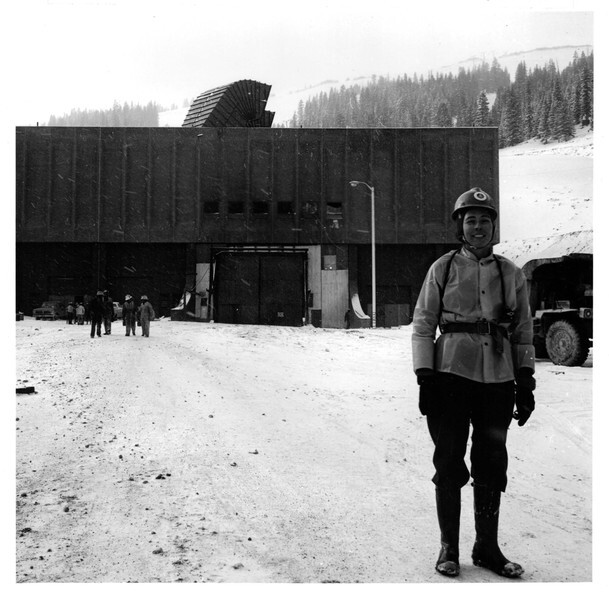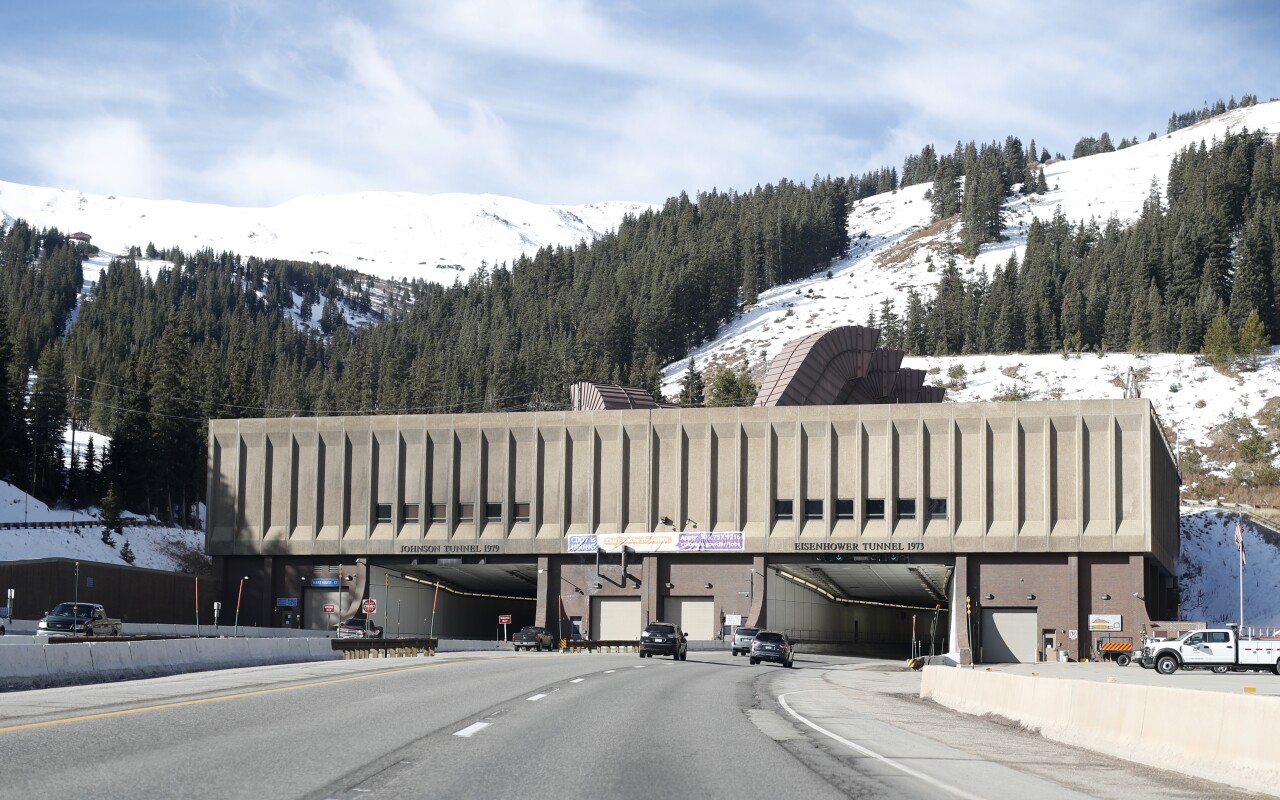Denver7 360 In-Depth News

Today marks 50 years since the Eisenhower Tunnel opened to the public, finally connecting the east and the west in a brand new way.
"The 50-year birthday is a big deal because that tunnel has significance not only for state transportation history, but also nationally, as part of the Interstate Highway System," said Lisa Schoch, cultural resources section manager and senior historian at CDOT headquarters.
In this In-Depth newsletter, we'll talk about:
- The history of the Eisenhower Tunnel and how it came about
- The only way to cross the Continental Divide before the tunnel was far from ideal
- Newspaper coverage of the opening day
- A female technician who fought to become the first woman allowed to work in the tunnel
- The inner workings of the tunnel and what keeps drivers safe
- Fun facts you probably didn't know
- What's next for the tunnel in terms of repairs
Let's start with the history of the Eisenhower-Johnson Memorial Tunnel. 📖
Ironically, it didn't start with boring into where the tunnel currently stands. It started with a "pioneer bore" under Loveland Pass, which was the only way over the Continental Divide in the area. But, as we know now, the idea of drilling a tunnel under the pass didn't come to fruition.
The call for bids for the Eisenhower Tunnel started in 1967 and construction officially kicked off in March of the following year. It opened to two-way traffic on March 8, 1973 to much fanfare and newspaper coverage (see some highlights from this day in the papers here!). However, the year before, it became obvious that a second bore was needed and the Colorado Division of Highways began to develop that plan.

The contract for the second tunnel was awarded in August 1975 and construction began. That tunnel, which we know today as the Johnson Tunnel, opened on Dec. 21, 1979.
In total, about one million cubic yards of rock, debris and other material was cleared from each bore. Seven men had died working on the two tunnels.
Learn more about the history of this historic tunnel here.
History was made in a lot of ways during this construction. But maybe you didn't expect to learn women's rights played a big part. 🙋♀️
Growing up, Colorado native Janet Bonnema loved math and science but counselors in school told her those were for boys.
Let's just say she didn't take their advice.
She went on to seek thrills as a rock climber, skier, parachutist, pilot and world traveler — breaking down gender stereotypes to pursue her passions.
In November 1970, Bonnema reached out to the Colorado Highway Department about a job opening as a technician for the Eisenhower Tunnel project. She met the qualifications and passed the tests, after all. On Dec. 11, 1970, she received a letter from the department. It read that "Mr. Jamet P. Bonnema" could accept the job if "he" wanted it.
When she inquired about the mix-up, she was told women were taboo in the tunnels of Colorado.
She filed a sexual discrimination lawsuit. It sparked Colorado voters decided to amend the state constitution to guarantee equal rights for women in November 1972.

"Her successful fight in court for her right to work inside the tunnel helped break down the centuries-old discriminatory myth that women in tunnels and mines would bring bad luck," the Colorado Women's Hall of Fame reported.
But her first day wasn't a smooth one. Lots of men walked away from the site. One quit outright. But the rest returned to work the next day. All the while, Bonnema went on to do the job she was hired for, recording measurements, collecting samples and completing technical drawings.
"We've honored her in one of our elevator lobbies with a photo because she was, you know, a really important part of the story," said Schoch, the historian at CDOT. "It's a small part of the story, right? It's not something that probably most people know about. But she was a trailblazer."
OK, let's fast-forward to the modern day. If you've lived here for some time, you've likely traveled through the tunnel. 👷
And it was probably a pretty uneventful part of the journey. That's thanks to the quiet, but crucial work, of about 50 employees assigned to operate at the tunnel.
From fire prevention to fans capable of creating hurricane-force winds, there's a lot of intense machinery. It comes at quite the price — a $70,000 Xcel Energy bill every month!

You've probably noticed the thousands upon thousands of lights in the tunnel... So, what happens in a power outage? After all, they're not all that uncommon at the tunnels.
Two emergency generators — capable of providing power to 80 homes — can be turned on and can run about every third to seventh light in the tunnel.
Learn more about what happens behind the scenes and peek into the control room in our story here.
So, what's next for the tunnel? Surely it's time for some repairs? 🔨
Yes, 50-year-old infrastructure of this magnitude needs a little extra TLC every now and then. Much of it isn't overly glamorous, but certainly important to driver safety: Think grout work, drainage, plumbing, structural liner, etc. '
The Colorado Department of Transportation said the tunnels currently have some vulnerabilities that crews will aim to fix with several projects totaling $50 million between 2022 and 2024 thanks to Senate Bill 260 and the state's new Bridge and Tunnel Enterprise.

These improvements "will enhance safety for the traveling public, upgrade connectivity to the rest of the freight network in the United States, and boost economic vitality along the only contiguous east/west interstate in Colorado," CDOT said.
As you may expect, some of these projects will require lane closures and impact to traffic. You can learn more about that and the expected schedules for the projects here.
We'll leave you with some ✨FUN FACTS✨ about the tunnel. 😎
First, the Eisenhower Tunnel was not originally called the Eisenhower Tunnel. It was actually going to be named the Straight Creek Tunnel. But in 1969, about a year into the construction of the first bore, the 36th governor of Colorado, John Arthur Love, proposed it be renamed after former President Dwight E. Eisenhower, who had died five months prior that year. And so it was.
Now to the other side. You may think the Johnson Tunnel is also named after the past president. But in fact, it's named after Edwin C. Johnson Bore, the late U.S. senator and governor of Colorado.

Second fun fact! The tunnel has its own fire department in case of emergencies. And it's pretty clear why. If there was a fire at the tunnel and traffic backed up, fire personnel from Clear Creek County or Summit County would have a pretty rough time trying to get up to the flames.
It also has its own fire suppression system that can extinguish a large fire in about two minutes. That system helps eliminate closures or long-term damage to the tunnel, “which could cost Colorado billions of dollars and impact tourism along the I-70 mountain corridor,” according to CDOT.
And here's our last fun fact: The first person to drive through the tunnel... had an interesting time. Let's just say, what he did wasn't really legal.